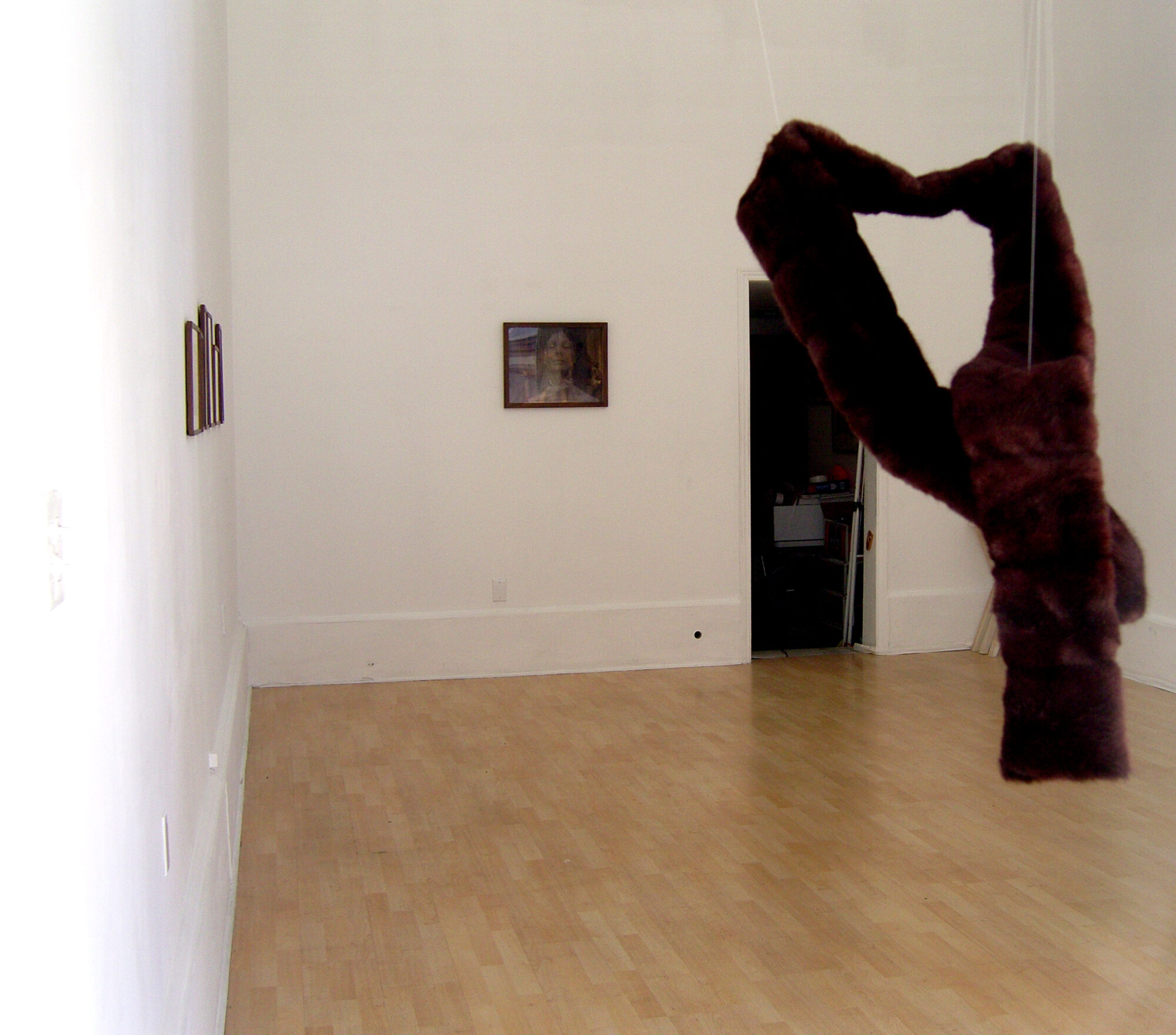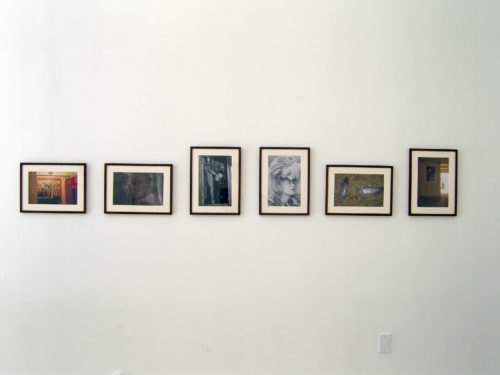
Pattern Recognition of a Collar to Idealism (dedication to a woman yet unknown)
September 4-October 11, 2008
For her first solo exhibition at Silverman Gallery “Pattern Recognition of a Collar to Idealism (dedication to a woman yet unknown)” presents new photographs, sculptures and video works by Susanne M. Winterling. On view from September 4 – October 11, 2008 “Pattern Recognition of a Collar to Idealism (dedication to a woman yet unknown)” deals with the gallery’s space as an architectural framework that gathers a collection of stories and cultural images dealing with idealistic women who have a history in San Francisco.
Winterling applies a method of working that weaves ideas and visual structures, both personal and collective, past and future. Taking fragments of memories and portions of biographies, she pays tribute to friends, artists and in particular to the dancer Isadora Duncan. Depicted in the photocollage “Menschheit” are Isadora Duncan and her students. For Duncan, who found calamity, extravagant idealism and defiant artistic experiments to be an integral part of her life, she like Winterling reaches out to the viewer, inviting them to construct their own ideas.
It is this openness that permits readings to be made which agree more or less with a viewer’s prior knowledge and experiences. In her 6 part series “Dear Little Sista (Chère Petite SoeurM.B.)”, Winterling illustrates how one can interpret information when it is paired, titled, framed and displayed. Taking its title from a 1974 work by Marcel Broodthaers that appropriates a found postcard of a boat in a storm Winterling’s installation similarly employs what she calls “re-recognition of imagery”.
“Dear Little Sista (Chère Petite Soeur M.B.)” borrows images from the 1977 film Julia that partially takes place in the Bay Area and follows the friendship of two women during the World War II. Both female protagonists fought equally important political battles. While one was heavily involved with and fighting in the Resistance movement the other struggled with becoming a playwright. Winterling chooses images that reflect the social relationships, both on a personal and political level and makes reference to the cinematic nature of Julia as it comes purely from a woman’s point of view.
What might seem like a topic too often memorialized, idealism is also a concept that applies to many amazing women in this century. As we continue to fight against stereotypes and rigid structures, Winterling makes note of the women whose sensuality, conviction and depth persist. Like William Gibson’s book “Pattern Recognition”, which Winterling borrows for part of her title, Gibson tells the story of one woman’s natural human desire to search for meaning. Like Gibson, Winterling’s characters, including her audience debate whether moments and fragments are part of a complete narrative or a work in process. In this way, Winterling’s work for “Pattern Recognition of a Collar to Idealism (dedication to a woman yet unknown)” is just the beginning to a story that has no definitive end.
In 2008, Winterling participated, amongst other things, in the Berlin Biennale, had a booth called “All Tomorrow’s Parites” at Art Basel Statements and has work currently has work in Dominic Eichler’s project space in Berlin. Running concurrently is a solo exhibition of Winterling’s work at Parotta Contemporary Art in Stuttgart titled “Isadoras Scarf”, a group show titled “Pollen” at Neue Alte Bruecke in Frankfurt and a project curated by Winterling titles, “A Member of the Wedding” at Daniel Reich Gallery, New York. Winterling lives and works in Berlin.
- Pattern Recognition of a Collar to Idealism
- Pattern Recognition of a Collar to Idealism
- Pattern Recognition of a Collar to Idealism
- Pattern Recognition of a Collar to Idealism







